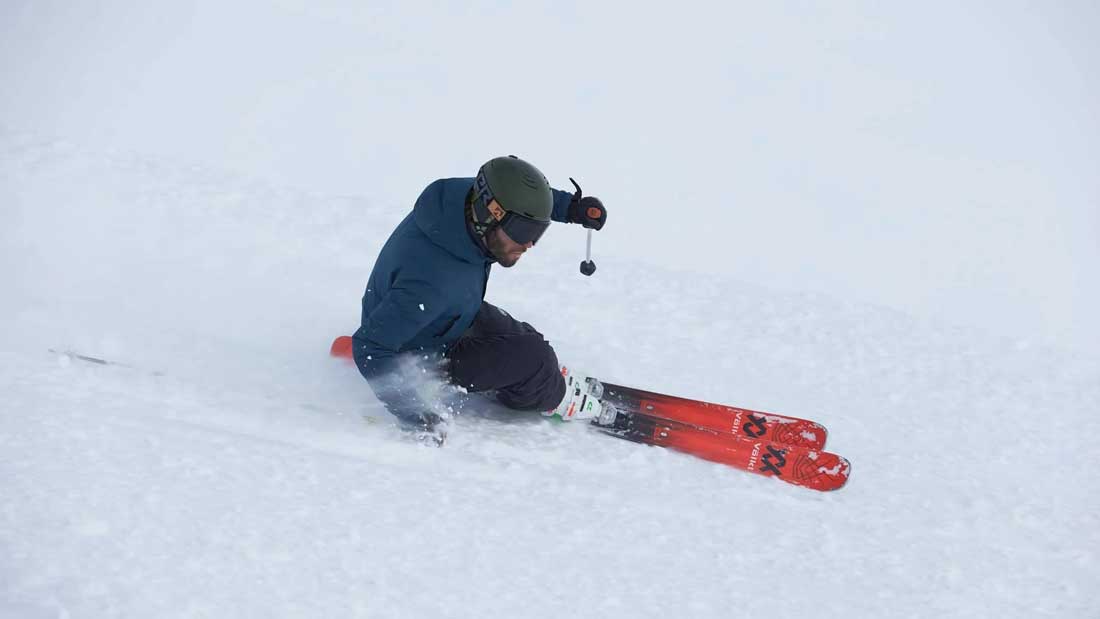Dial In Your Ride: Why the Right Ski Matters
As an intermediate or advanced skier, your equipment should match your technique, terrain preference, and performance goals. Choosing the right ski can elevate your control, stability, and fun on the mountain—while the wrong ski can hold you back or wear you out.
At The Pro Ski and Ride, we help experienced skiers find the perfect balance of playfulness and stiffness to suit skiers' evolving style. Here’s what you need to know:
🎿 1. Know Your Terrain Preference
Start by thinking about where you ski most often:
-
Frontside/Groomers: Look for narrow waist widths (70–85mm) for quick edge-to-edge transitions and responsive carving. These skis can be softer for beginner skiers or as stiff as a race ski construction.
-
All-Mountain: Look for something mid-width (85–100mm) for versatility across hardpack, trees, chopped up snow, and occasional powder. This is a wide range of skis that covers some that are more carving oriented to those that are more freeride oriented.
-
Freeride/Powder: Opt for wider skis (100mm+) with rocker tips for float and surfy turns. These skis tend to be longer and softer at the tip and tail to add forgiveness.
-
Race or Carving: Choose stiff skis with a tight turning radius for max edge hold at speed. Skiers tend to have multiple pairs of these skis for different turn radii/racing disciplines.
⚙️ 2. Match Flex and Construction to Your Style
As you gain skill, stiffer skis often become more rewarding. They offer better energy transfer and stability at high speeds but require good technique and energy. Lightweight skiers may still benefit from a medium-flex ski with metal laminates or carbon for rebound.
-
Intermediate Skiers: Look for skis with forgiving flex but enough torsional stiffness to improve edge grip. A partial cap construction will allow support underneath the binding while a softer tip and tail will help with turn entry and exit.
-
Advanced Skiers: Consider metal layers (like Titanal) and full sidewall construction for added power and precision. Companies have been getting more innovative with how they layer these materials to provide edge hold while still making turning effortless.
🌀 3. Understand Camber and Rocker Profiles
Modern skis use different profile designs to help with float, edge grip, and maneuverability:
-
Traditional Camber: Best for carving and hard snow.
-
Rocker-Camber-Rocker (Hybrid): Most popular for all-mountain performance. Some skis feature an early rise in the tip which is similar to this.
-
Full Rocker: Easier turn initiation, especially in deep snow or trees. Often found on powder skis.
At The Pro Ski and Ride, we stock skis tailored to a variety of conditions found in the Northeast.
📏 4. Size by Skill, Not Just Height
A general rule: the stronger the skier, the longer you can go—within reason.
-
Intermediate skiers should aim for chin to nose height.
-
Advanced skiers often size skis to eye or head height for added stability and power at speed. Expert skiers tend to go even longer.
Still unsure? Our team can walk you through ski sizing in-store or remotely.
✨ 5. Consider Phantom Glide for Permanent Base Performance
If you're investing in a new pair of skis, consider adding Phantom Permanent Waxless Glide.
Unlike traditional hot wax, Phantom is a one-time base treatment that:
-
Increases glide in all snow temps
-
Eliminates the need for regular waxing
-
Doesn’t wear off over time
Perfect for high-mileage skiers who want fast, low-maintenance bases all season long. Ask us about adding Phantom to your new skis before they ship or during in-store pickup.
🛒 Ready to Upgrade? Shop Expert-Selected Skis
At The Pro Ski and Ride, we curate high-performance skis for all skiers—from all-mountain chargers to carving machines.
Need help choosing? Contact our team for personalized recommendations based on your ability, goals, and terrain.
Final Tip: Ski Better With the Right Gear
Choosing the right ski isn’t about chasing trends—it’s about choosing equipment that complements your ability and pushes you to improve. Whether you're carving groomers, floating through pow, or charging steeps, the right ski makes all the difference.

